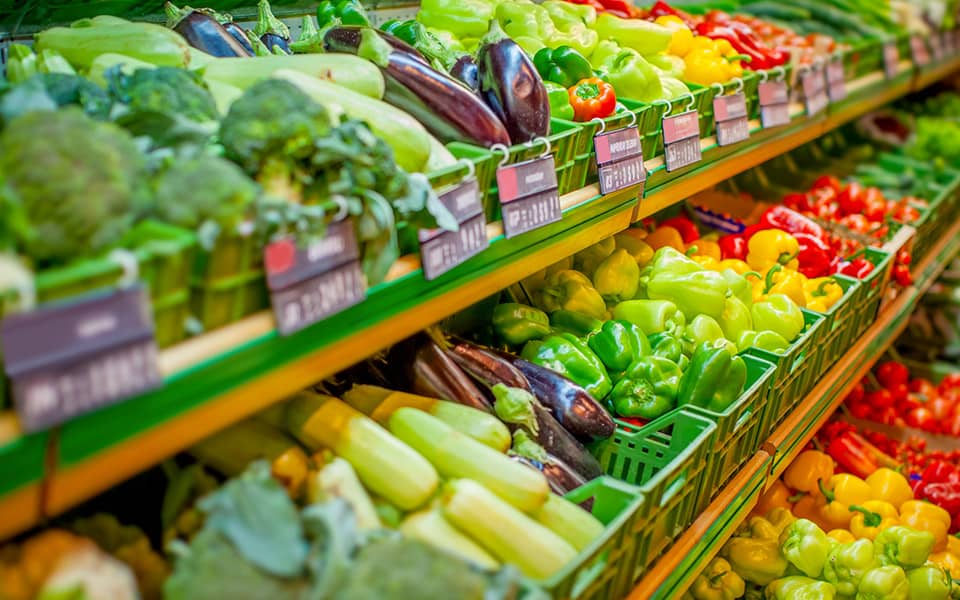Temperature management best practices for maximizing perishable food quality and safety
When shipping fresh and frozen perishable food products, maintaining consistent temperatures throughout the cold chain journey is imperative to protecting both food quality and safety. In best-case scenarios, temperature abuse can quickly deteriorate the quality of frozen and fresh perishables, resulting in premature ripening, reduced freshness, shorter shelf life or unappealing product appearance. In the worst cases, temperature excursions can create conditions for the development of bacteria and/or pathogens that can cause foodborne illness.
As I explained in a recent article for Refrigerated & Frozen Foods, many things can go wrong along the journey from a farm to your favorite supermarket or restaurant. Therefore, it’s important to understand the risks, causes and industry best practices for preventing temperature abuse.

Cold chain overview
The cold chain is defined as the uninterrupted transport and storage of perishable goods under temperature-controlled conditions. In the perishable food cold chain, this primarily refers to the process of shipping goods from producers (i.e., farms) via trucks (i.e., carriers) to retail distribution centers (DCs) or facilities where they’re ultimately served or sold to consumers (i.e., fork).
Food quality is a differentiator from farm to fork — impacting customer experiences through the appearance, texture and taste of perishables. For example, we all know the difference between a salad or sandwich with fresh, crisp lettuce and one where the lettuce is wilted or soggy. In the cold chain shipping process, the margin of error contributing to those two extremes is relatively small.
Temperature consistency is also critical to maintaining perishable food safety. Improper processing, cross-contamination and temperature abuse are among the leading causes of foodborne illnesses.
According to the Food Safety Modernization Act (FSMA), shippers (i.e., producers) and their carriers must agree to a mechanism that ensures temperature control for safety. Although the primary responsibility rests with the producers of perishable products, carriers must be able to demonstrate that they had maintained temperature conditions upon request. If an interruption in the prescribed temperature setpoint occurs — or other conditions arise that could render food unsafe — food may not be sold/distributed until a safety determination is made.
Thus, the use of a temperature monitoring and/or recording device in every refrigerated trailer has become a standard operating procedure (SOP) for many shippers and carriers. These devices provide real-time and/or historic proof of correct holding temperatures during cold chain transport.
Shipping best practices
For stakeholders involved in the shipping process, quality control (QC) best practices can be divided into four main categories.
- Pre-cool temperatures prior to loading.
Product temperatures should be cooled down to shipping temperature setpoints prior to loading onto the trailer. Temperatures of all product cases and/or pallets should be checked, verified and documented during the pre-cooling process.
- Prepare the trailer for loading.
Before loading, the trailer should be pre-cooled and inspected per industry best practices or applicable SOPs. Make sure the trailer is pre-cooled to the designated setpoint and its controls are set to “continuous run” mode. Verify that temperatures are correct in both the front and rear of the trailer, and inspect the trailer for any issues that could interfere with its ability to maintain proper temperatures.
- Load the trailer for optimum cold chain effectiveness.
Pallets should be loaded to minimize heat transfer from outside the trailer and maximize proper airflow. Load pallets in a centerline pattern so that they do not touch the trailer walls. Pallet height should be below the red line (if present) or provide at least 12 inches of clearance from the ceiling. Apply load locks to keep pallets from shifting during transport.
- Maintain and monitor shipments during transport.
A real-time data tracker should be loaded onto every shipment to help maintain temperature control. Stakeholders can receive alerts when temperatures drift from established setpoints and access historic data logs to verify compliance.
Product should be quickly moved into a cold storage facility or store inventory when it arrives at DCs or retail outlets. Data loggers and real-time trackers can help ensure that the transfer of goods has taken place quickly and according to SOPs.
Take control of temperature management
Proper temperature management is a key aspect of ensuring food quality and safety from farm to fork. Real-time trackers and related cargo software and services, combined with these best practices, are essential tools for preventing temperature abuse.
Read the full article here.

Facility Health Score Insights Program Transforms Enterprise Maintenance
Leveraging refrigeration performance data drives food retail cost reductions. Maintaining proper...

8 proven strategies for rigorous cold chain management
Preparing for the approval and safe use of A2Ls in commercial refrigeration applications...
Protection for high-value shipments just got even better
We’re excited to announce the release of Copeland’s newest real-time tracker, the GO Real-Time...
